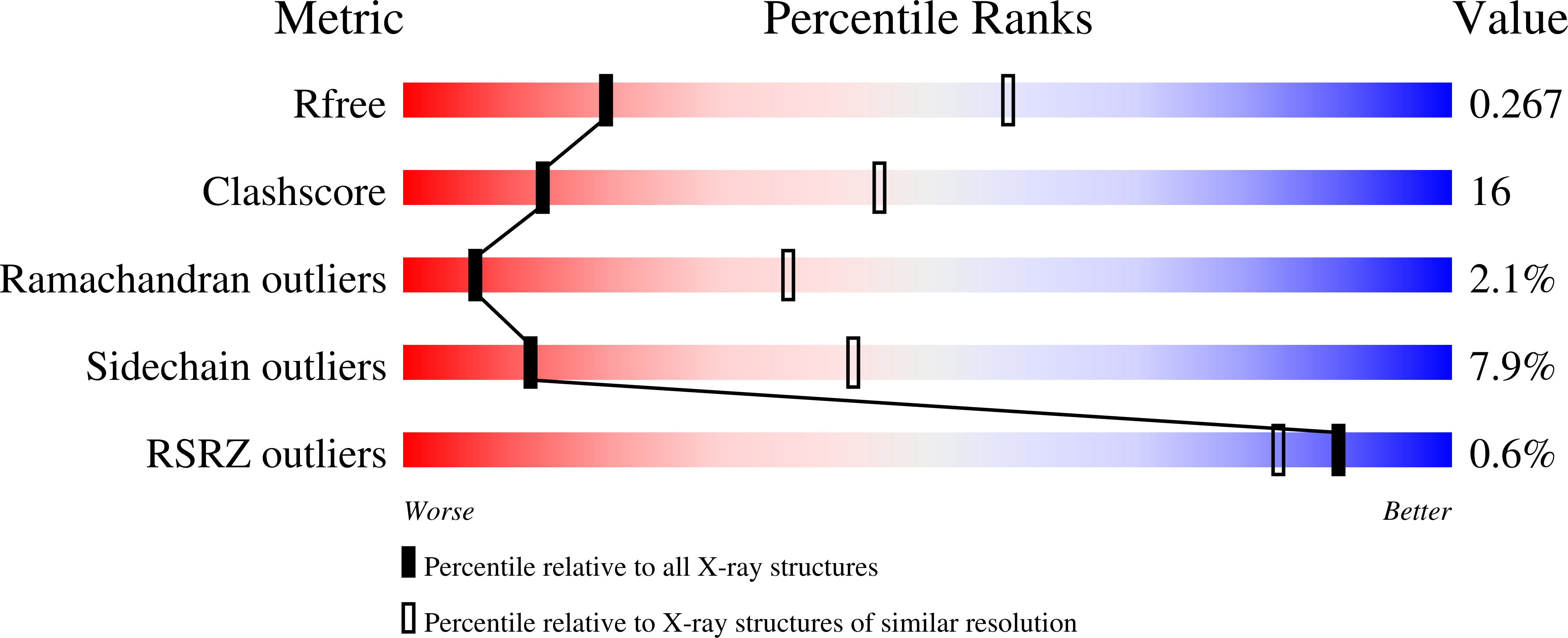Structure and cooperativity of a T-state mutant of histidine decarboxylase from Lactobacillus 30a.
Worley, S., Schelp, E., Monzingo, A.F., Ernst, S., Robertus, J.D.(2002) Proteins 46: 321-329
- PubMed: 11835507
- DOI: https://doi.org/10.1002/prot.10042
- Primary Citation of Related Structures:
1IBT, 1IBU, 1IBV, 1IBW - PubMed Abstract:
Histidine decarboxylase (HDC) from Lactobacillus 30a converts histidine to histamine, a process that enables the bacteria to maintain the optimum pH range for cell growth. HDC is regulated by pH; it is active at low pH and inactive at neutral to alkaline pH. The X-ray structure of HDC at pH 8 revealed that a helix was disordered, resulting in the disruption of the substrate-binding site. The HDC trimer has also been shown to exhibit cooperative kinetics at neutral pH, that is, histidine can trigger a T-state to R-state transition. The D53,54N mutant of HDC has an elevated Km, even at low pH, indicating that the enzyme assumes the low activity T-state. We have solved the structures of the D53,54N mutant at low pH, with and without the substrate analog histidine methyl ester (HME) bound. Structural analysis shows that the apo-D53,54N mutant is in the inactive or T-state and that binding of the substrate analog induces the enzyme to adopt the active or R-state. A mechanism for the cooperative transition is proposed.
Organizational Affiliation:
Institute of Cellular and Molecular Biology, Department of Chemistry and Biochemistry, University of Texas, Austin, Texas 78712, USA.


















